Tserkva of St. Basil the Great in Poździacz (Leszno) was built in 1737 at a location of an older church. It was abandoned after the Ukrainian population was forcefully resettled in the 1940s. The building was acquired by Roman Catholics in 1957 and was transformed into church of the Immaculate Conception of the Blessed Virgin Mary.
The log church, oriented eastward, comprises three parts and features kriloses in the nave. The chancel, enclosed with semi-hexagonal walls, is covered with barrel vault. Over the sanctuary there is a five-pitched roof with a ridge. The nave with a square floor plan is covered with a nearly spherical, octagonal dome, sitting on the tholobate and topped with a false roof lantern. The base of the drum features skirt roofs. The narthex is covered with a two-pitched roof. The skirt roofing is supported on log tails (sanctuary) and on pillars. The low rectangular kriloses are covered with mono-pitched roofs.
The original iconostasis, transferred to the Museum of Folk Architecture in Sanok, is displayed in the tserkva from Grąziowa. During the latest renovation works the original main portal (with an inscription comprising a date) was cut out, the walls were covered with panelling and the roof tiles were replaced with sheet metal.
Near the tserkva there are old damaged tombstones. There was also a wooden quadrilateral belfry from the 1700s with a 16th century bell; the structure collapsed in 2000. A small, welded tower stands there today.
In the vicinity of the former parish tserkva, along the village road, we can see a wooden Greek-Catholic chapel of the Holy Trinity, built in 1858. Nowadays it is used as a Greek Catholic parish tserkva.
In 1977 the Ukrainian-sounding names of villages and towns were changed; Poździacz received the name Leszno. During the times of the “first Solidarity” in 1981 the old names were reinstated. A few months later, however, at the request of the local community, Poździacz was again named Leszno.
Photo: Krystian Kłysewicz
Gallery
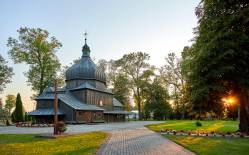
Recommended venues on the Trail
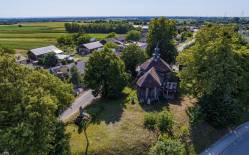
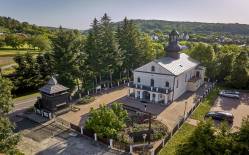
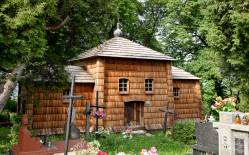
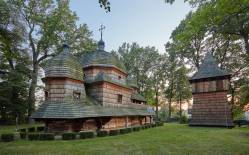



This website has been modernized with the financial support of the European Union under the Cross-Border Cooperation Programme Poland-Belarus-Ukraine 2014-2020. The responsibility for its content lies solely with the Podkarpackie Regional Tourism Board and cannot, in any case, be treated as a reflection of the position of the European Union, the Managing Authority, or the Joint Technical Secretariat of the Cross-Border Cooperation Programme Poland-Belarus-Ukraine 2014-2020.









